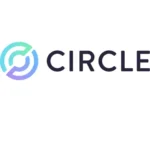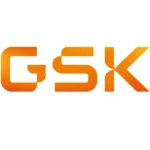South Korea’s largest financial institutions are racing to secure partnerships with Circle Internet Group, as the nation’s banks seek to capitalize on the growing stablecoin market that has seen significant capital outflows.
Shinhan Financial Group and Kakao Pay are preparing for discussions with Circle officials later this month, according to industry sources. The meetings will coincide with a visit by Circle President Heath Tarbert, who is expected to finalize cooperation frameworks that could reshape how Korean financial services handle digital currencies.
Hana Bank already signed a comprehensive business agreement with the USDC issuer in May, positioning itself ahead of competitors in the stablecoin race. The bank had previously applied for trademark registration of 16 stablecoin brands, signaling broader ambitions in the digital asset space.
Shinhan Financial Group, one of Korea’s so-called Big Five financial groups, represents a significant prize for Circle. The conglomerate operates across banking, securities, life insurance, and investment banking, giving any partnership substantial reach across Korea’s financial ecosystem.
Kakao Pay brings a different value proposition, with over 40 million users seamlessly integrated into the popular messaging app KakaoTalk. The company reported trailing twelve-month revenue of $575 million and maintains a market capitalization of $6.2 billion, making it a formidable player in Korea’s mobile payment landscape.
The partnerships come as Korean financial institutions face pressure from stablecoin-related capital flows. Nearly $19.5 billion worth of stablecoins left South Korea in the first quarter of 2025, according to industry data, highlighting the scale of digital asset activity that banks want to capture rather than lose to offshore platforms.
Circle’s expansion into Korea follows similar moves in Japan, where SBI Holdings and SBI Shinsei Bank announced a $50 million strategic investment in the stablecoin issuer. The company has positioned USDC as a bridge between traditional finance and blockchain technology, though adoption varies significantly across different markets.
Korean financial institutions appear particularly interested in Circle’s payment network capabilities, which promise to reduce cross-border settlement times from the traditional two-to-five business days to near real-time processing. However, regulatory frameworks for stablecoin operations in Korea remain under development, potentially complicating implementation timelines for these partnerships.
The Bank of Korea has also begun exploring stablecoin integration, with Deputy Governor Lee Jong-ryeol indicating the central bank is considering deposit tokens that would “coexist” with private-sector stablecoins. This regulatory interest could either facilitate or complicate private partnerships, depending on how authorities structure oversight requirements.
For Korean banks, the Circle partnerships represent both opportunity and uncertainty. While stablecoins offer potential efficiency gains in payments and settlements, the technology also introduces new compliance challenges and competitive dynamics that traditional financial institutions are still learning to navigate.





